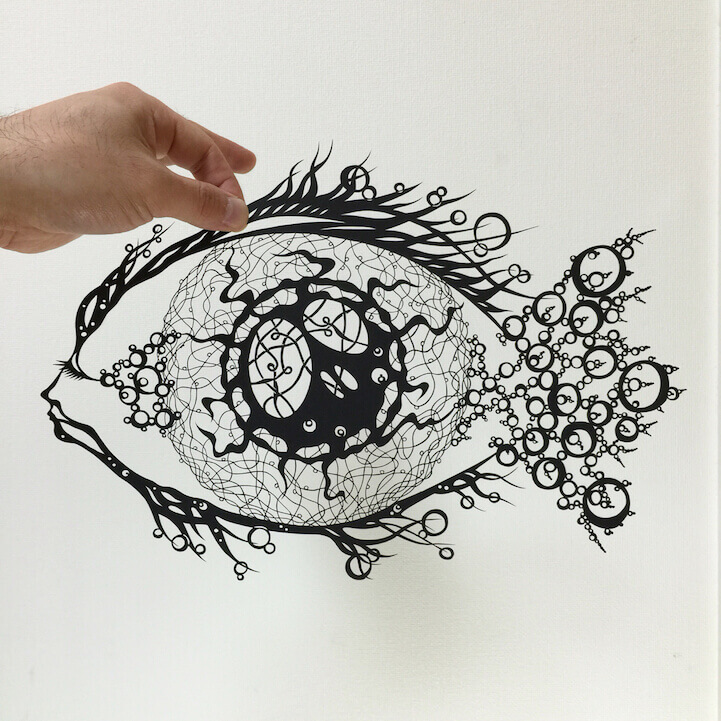
Blog
Paper-Cutting Art: Exploring Wonderful Designs Across Cultures

Paper-cutting art is a unique form of artistic expression that has been practiced for centuries in countries all over the world. From Chinese paper-cutting to Mexican papel picado, each culture has its own distinct style and techniques for creating intricate designs and patterns using paper.
Chinese Paper-Cutting Art
Chinese paper-cutting, or jianzhi, is one of the most well-known forms of paper-cutting art. It is believed to have originated in the 6th century AD and was traditionally used to decorate windows and doors during festivals and celebrations. Chinese paper-cutting typically involves using scissors or knives to cut designs from red paper, which is considered to be a lucky color in Chinese culture. The designs often feature animals, flowers, and other symbols of good luck and prosperity.
Japanese Kirigami
Kirigami is a Japanese form of paper-cutting that involves folding paper and then cutting out designs. Unlike traditional paper-cutting, which is done on a flat piece of paper, kirigami is three-dimensional and often involves creating pop-up structures. Kirigami has been used to create everything from greeting cards to decorative lanterns and can be quite intricate and detailed.
Mexican Papel Picado
Papel picado is a traditional Mexican art form that involves cutting intricate designs into brightly colored tissue paper. The designs often feature floral motifs, religious icons, and other symbols of Mexican culture. Papel picado is commonly used to decorate homes and public spaces during festivals and celebrations, such as Dia de los Muertos (Day of the Dead).
Polish Wycinanki
Wycinanki is a traditional Polish folk art that involves cutting intricate designs from paper using scissors. The designs often feature floral motifs and other symbols of Polish culture. Wycinanki is typically done on colored paper and is used to decorate homes and churches during festivals and celebrations.
German Scherenschnitte
Scherenschnitte is a traditional German art form that involves cutting designs from black paper using scissors. The designs often feature scenes from daily life, such as farming or hunting, and are typically quite detailed and intricate. Scherenschnitte was traditionally used to decorate homes and churches and is still practiced in some parts of Germany today.
Swiss Silhouette
Silhouette is a traditional Swiss art form that involves cutting portraits from black paper using scissors. The portraits are typically done in profile and are often quite detailed and intricate. Silhouette was popular in Europe during the 18th and 19th centuries and was often used to create keepsakes and mementos.
Iranian Paper-Cutting Art
Iranian papercutting, or sanjeh, is a traditional art form that has been practiced for centuries. The designs often feature geometric patterns and are typically cut from white or colored paper. Iranian papercutting is often used to decorate homes and is also a popular souvenir for tourists visiting the country.
Danish Papirklip
Papirklip is a traditional Danish art form that involves cutting designs from white paper using scissors. The designs often feature floral motifs and other symbols of Danish culture. Papirklip was traditionally used to decorate homes and churches and is still practiced in some parts of Denmark today.
Indonesian Kertas Rajah
Kertas Rajah is a traditional Indonesian paper-cutting art that originated in the island of Sumatra. The designs often feature floral motifs, animals, and other symbols of Indonesian culture. Kertas Rajah is typically done on black paper and is used to decorate homes and public spaces during festivals and celebrations.
Turkish Kat’ı
Kat’ı is a traditional Turkish art form that involves cutting designs from colored paper using scissors. The designs often feature geometric patterns and are typically done in bright colors. Kat’ı is commonly used to decorate homes and is also a popular souvenir for tourists visiting Turkey.
Indian Sanjhi
Sanjhi is a traditional paper-cutting art form that originated in northern India. The designs often feature religious motifs and are typically cut from white paper. Sanjhi is often used to decorate temples and other sacred spaces and is also a popular form of folk art in India.
These are just a few examples of the many different forms of paper-cutting art that exist around the world. Each culture has its own unique style and techniques for creating intricate designs and patterns using paper, and these art forms continue to be celebrated and practiced today. Whether used to decorate homes and public spaces or to create works of art, paper-cutting is a fascinating and versatile medium that offers endless creative possibilities.





 Christmas
Christmas Father’s Day
Father’s Day Valentine’s Day
Valentine’s Day Easter
Easter Thanksgiving
Thanksgiving Halloween
Halloween
 Birthday
Birthday Wedding
Wedding Anniversary
Anniversary Graduation
Graduation Baby Shower
Baby Shower House Warming
House Warming
 For Him
For Him For Her
For Her For Kids
For Kids
 Floral
Floral Animals
Animals Trees
Trees Architecture
Architecture Vehicle
Vehicle LGBTQ+
LGBTQ+ Just Because
Just Because
 Pop-up Box
Pop-up Box Pop-up Stand
Pop-up Stand